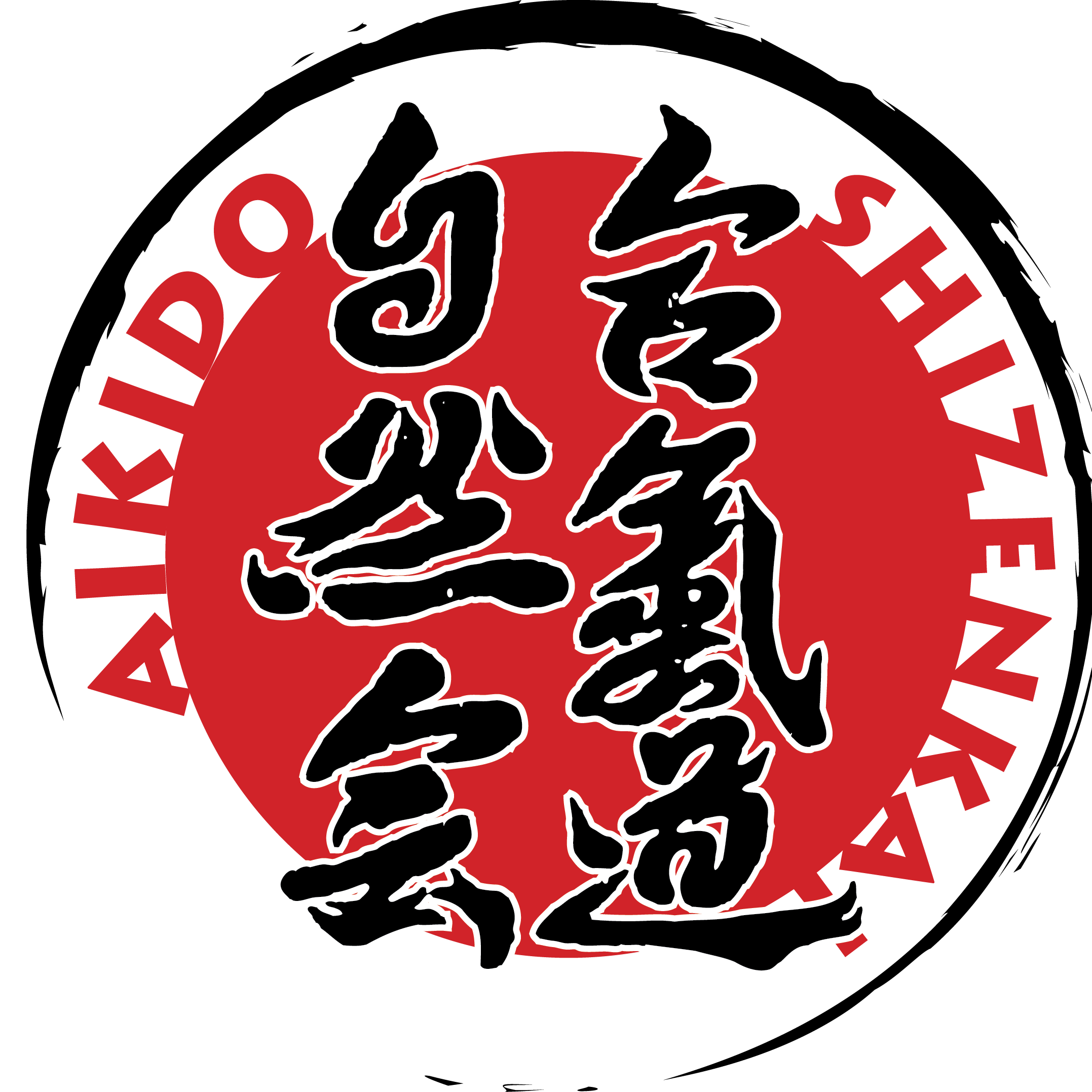Aiki-jujutsu
While many people in our current culture may be familiar with martial pursuits like MMA, BJJ, and wrestling fewer are knowledgeable about the more traditional forms of Aikido, Judo, Jujutsu (Japanese), Karate, and Kung Fu. Our foundational arts— those arts which the founder, Yukio Noguchi, of Shizenkai Aikido incorporated into our system, have many of the elements of Aikido and traditional Japanese Jujutsu, but we feel that Aikijujutsu is a better way to describe what we do. Primarily based on the material we learned from our teacher Charlie Ii, and our experience with Dan Zan Ryu Jujutsu, Shizenkai Aiki-jujutsu combines aspects of Aikido, Jujutsu, weapons work (sword, staff, knife), Judo, and striking elements from Karate and Kung Fu.
In very simple terms, Shizenkai differs from most Aikido in the close quarter applications work and our focus on the use of strikes preceding techniques of off balance and control. We can further differentiate from Japanese traditions as our founders and instructors both called Hawaii their home and incorporated much of the relaxed island approach into their teaching. Although, we are not a goshin ryu-ha (formal non-Japanese school) we still have the traditional elements such as language and culture, which anchor us to that martial culture and time period.
We have continued with the name of Aikido that our instructor, Charlie Ii used, as a matter of respect, however, we feel more comfortable classifying as a sōgō budō form (総合武道, “composite” or “comprehensive” martial art), to indicate a martial art into which various martial ways have been integrated. We are more closely identified as an offshoot from a pre-war style of aikido known as Yoshinkan; however, both the founder, Yukio Noguchi and his student (and our instructor) Charlie Ii made important connections to judo, karate, kung fu, kendo, and Japanese jujutsu.
As a student, you will start out learning rolling and falling techniques to protect yourself when being thrown. You will work on throws, a few basic strikes, joint locks, and how to move against single and multiple opponent attacks. You will also learn techniques for the wooden sword and short staff. Kata, or pre-arranged forms, are the primary means of transmission with Randori, or free play, being another training aid.
We are a small, tight-knit group that enjoys passing on this tradition to those with our shared passion and dedication. Anyone, regardless of gender, physicality, age*, ethnicity, etc. is invited to enter and train.
Those few who come to appreciate the study, the work, and the rigors of training often do so for the greater benefit of the philosophy and structure they find it gives them in life. We welcome you to this system and our family.
